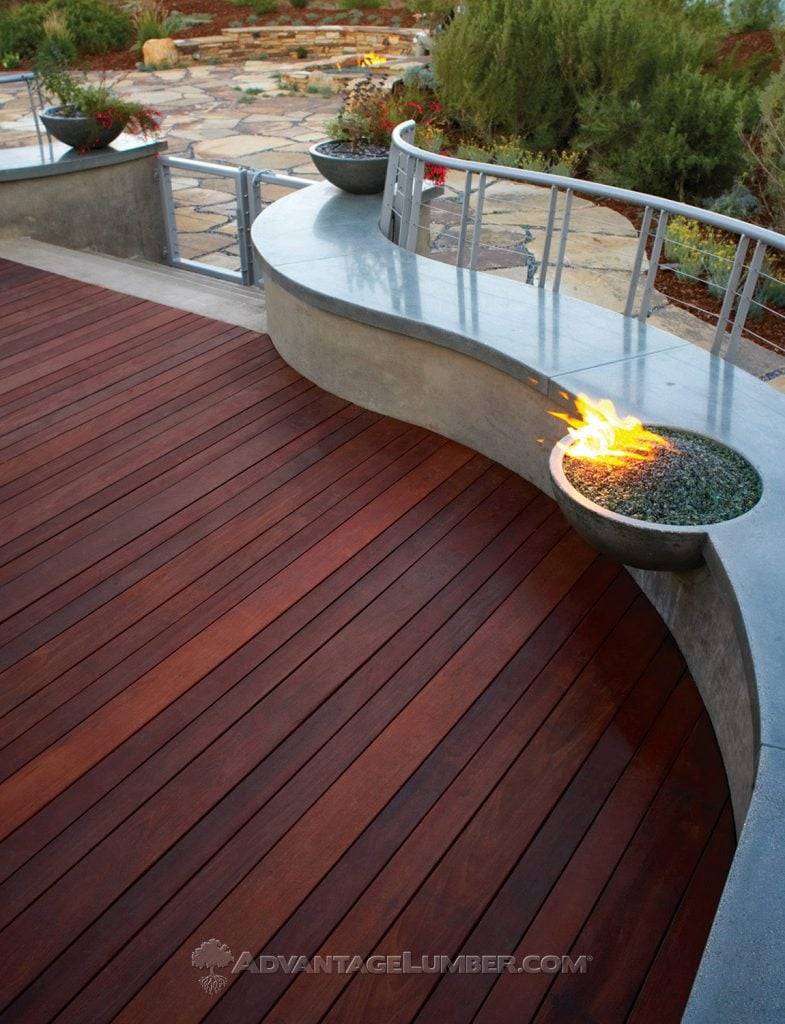While wide deck boards can add a distinctive aesthetic appeal to your deck, they come with a few challenges that might make certain decking products less suitable for your project.
First lets go over:
How Wide are Typical Deck Boards?
Deck boards typically come in a range of widths. The most common sizes in the United States are:
- Narrow: These boards are usually 3.5 inches wide, also known as a 1×4 in the nominal dimension.
- Standard: These are typically 5.5 inches wide, which corresponds to a 1×6 board in the nominal dimension.
- Wide: These are generally 7.25 inches wide, or a nominal 1×8.
Remember, “nominal” sizes refer to the size of the board when it is first rough cut, before it is dried and planed, so the actual dimensions will be slightly smaller. These sizes can vary depending on the specific manufacturer and product, and you can find other less standard widths if needed for your particular project.
Composite decking boards often come in similar widths, but they also offer wider options in many cases. The choice of board width largely depends on your project requirements and the look you want to achieve.
Wide Wood Deck Boards
When it comes to wooden deck boards wide deck boards can cause some issues. Here’s a few things you should consider before installing any wide wooden deck boards:
- Warping and Cupping: Wide wood deck boards are more susceptible to warping and cupping due to changes in temperature and humidity. Wood naturally expands and contracts with changes in moisture levels. In wider boards, this can lead to more noticeable warping or cupping (when the edges of the board rise up).
- Cracking and Checking: Wider boards also have a higher tendency to crack or check. These are small splits in the wood that occur as it dries and shrinks.
- Moisture Retention: Wider boards have more surface area, which can lead to increased moisture retention. This can exacerbate the aforementioned issues and also make the boards more prone to rot and mold.
- Cost and Availability: Wider wood boards are typically more expensive and may not be readily available. This is especially true for certain types of wood.
- Installation Difficulties: Wide boards can be more challenging to handle and install due to their size and weight. They are typically more difficult to straighten if they boards have a bow to them.
- Maintenance: Given the above points, wide wooden deck boards typically require more maintenance to keep them looking good and functioning properly.
For these reasons, we do not recommend wide wooden deck boards. Many people prefer to use narrower boards or turn to alternatives like composite decking for wider board applications.
Pro Tip: Alternating different widths can give the appearance of wide deck boards incorporated into your deck design. The deck below was built using our 4 inch wide Ipe wood deck boards and our 6 inch wide Ipe wood decking.

Wide Composite Decking
Many composite decking manufacturers don’t make wide plank deck boards. Composite decking materials are made from a mix of wood particles and plastic and could also experience issues like cupping.
The good news however is TimberTech decking by AZEK® offers deck boards that are 7.25″ wide.
They have two different collections that offer the wider width deck boards:
The Vintage Collection®
Available in narrow, standard, and wide-width boards.
Narrow = 3.5” | Standard = 5.5” | Wide = 7.25”
The Harvest Collection®
Slate and Brownstone available in standard and wide-width boards.
Standard = 5.5” | Wide = 7.25”
TimberTech also offers a 12″ wide board but this is fascia for finishing your deck joists and should not be used as surface decking because the finished thickness is only .5″ thick.
